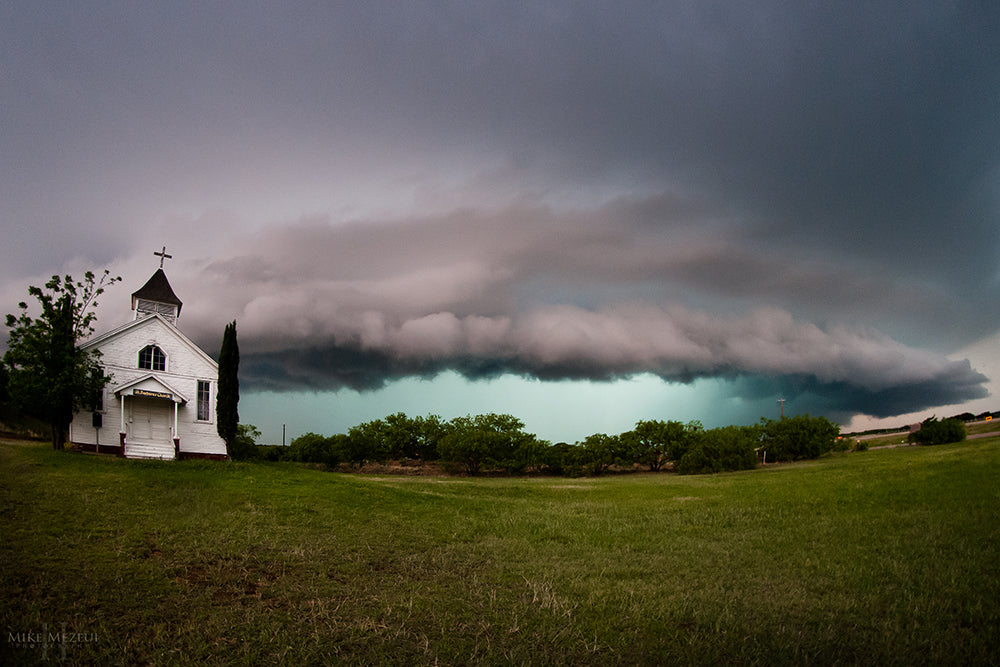There is no way to truly experience the power of Mother Nature without being there firsthand—the feeling of powerful winds howling at your back, the deafening sound of crackling thunder overhead, the heart-pounding adrenaline that flows through your body as you race to stay ahead of a violent tornado. Most of us, though, are sane enough to not put ourselves in the path of severe weather. Myself? I have what many would call a "sick obsession." I thrive off of photographing some of the world’s scariest weather – supercell thunderstorms and tornadoes.
Every year when the spring season rolls around, I find myself collecting my photography gear and hopping in my car taking to the central plains, also known as "tornado alley." It’s an escape from reality and a trip into the unknown. Every mile traveled presents a different opportunity to photograph the sky, but there are no guarantees that I will encounter the stratosphere-scraping, Earth-eating supercells I desire. It takes just the right mix of atmospheric ingredients to ignite what I strive to fill my frame with. Many days come with just a suntan and added miles to my vehicle, but the days when Mother Nature comes out to play, my camera and I are ready to rock and roll.
From the initial cumulus tower (nerdy weather talk) accelerating skyward, I begin to think about how I want to capture the unfolding scene. I ask myself, "What foreground do I have to work with? How does that landscape over there compare to here? What could possibly get struck by lightning?" (Seriously, I really ask that.) There are so many factors that I can control, but so many that I cannot. I only have a few minutes to capture my photographs before I have to reposition myself according to where the storm has moved.
When creating a composition for my photograph, I try my best to include some sort of element that helps create an understanding of the pure size and power of these storms. Whether it is a single tree, a skyscraper, or some sort of other human element, I want my audience to feel power through my photograph. I want my audience to feel and see what I experienced through my lens but in a much safer manner.
Hail, high winds, tornadoes, and lightning all present significant dangerous threats while out in the field photographing severe weather. Over the past 12 years I have developed a serious respect for what these extreme storms can produce, and how in the blink of an eye, things can change drastically. With every trip, I always try and keep myself safe. Whether it’s staying inside the vehicle while photographing lightning, or having a planned escape route if the threat of a tornado exists, I want to be able to come back home to share the images I capture.
My passion for photographing severe weather has only grown stronger from when I was a young child lying on the picnic table at recess, just looking up watching the clouds move across the sky. I invite anyone with an interest in weather photography to give it a shot, but to do so safely. If you do decide to venture out, here are a few suggestions I have for you to keep yourself safe.
- First off, be smart and stay on your toes. If you feel like you are in danger, get yourself into a position where you feel comfortable. Not all great severe weather photographs are obtained from underneath the storm. Many of these mammoth supercells resemble barber poles or upside down wedding cakes when you view them from miles away. These structures make for great photographs.
- Secondly, if you attempt lightning photography, keep yourself inside your vehicle. Manfrotto makes an excellent window mount for your camera that will allow you to shoot from the security of your vehicle. Lightning can strike anywhere, anytime before, during, and after a storm. The general rule is, if you can hear the thunder, you can be struck by lightning.
- Finally, one of the biggest threats of severe weather is hail. If you find yourself getting pummeled, quickly find shelter. If you can’t find a gas station, bank drive thru, or some other structure, pull over and shield your eyes. DO NOT pull over underneath an overpass. This action puts yourself and so many others at risk of a car accident – slippery roads + stopped vehicles + bad visibility = not good.
It may sound scary, but photographing severe weather can be quite the thrill and quite the photographic reward. Over my time as a severe weather photographer, I have come across so many amazing and phenomenal visuals that have made me appreciate Mother Nature and life in general. Every storm is different than the previous, and you never know what you will see. Even if you don’t encounter any severe weather, just take a moment to look up and appreciate the sky. It has more to offer then what you think.








